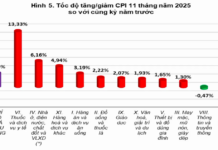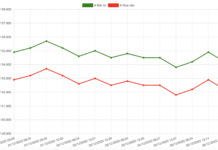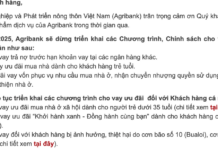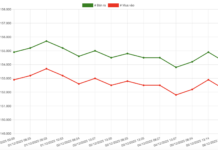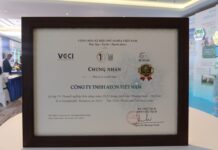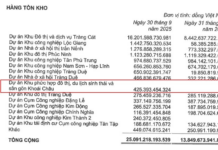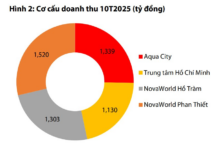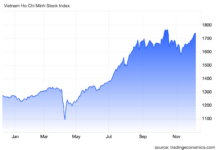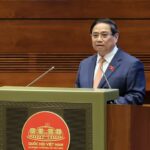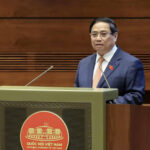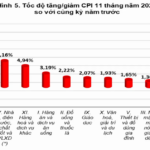On October 20, following Prime Minister Pham Minh Chinh’s presentation of the summary report on the implementation of the 2025 Socio-Economic Development Plan and the 5-year plan for 2021-2025, along with the proposed 2026 Socio-Economic Development Plan, Mr. Phan Van Mai, Chairman of the National Assembly’s Committee on Economics and Finance, delivered the review report on these matters.
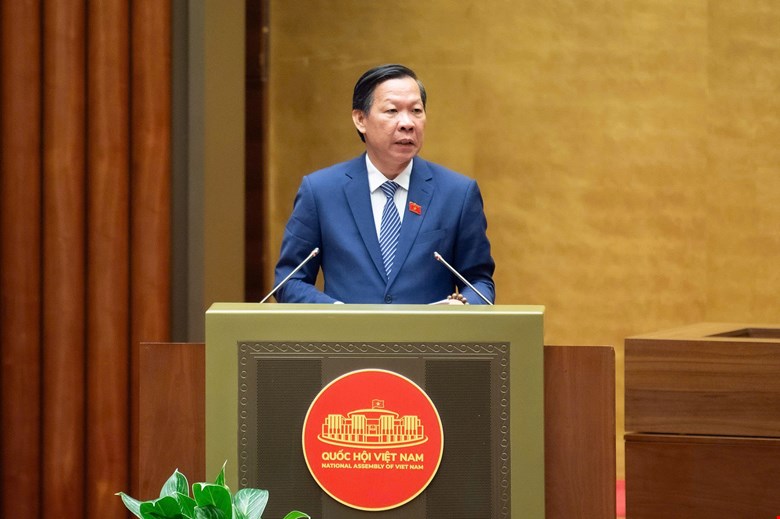
Chairman of the National Assembly’s Committee on Economics and Finance, Phan Van Mai, presents the review report. Photo: Pham Thang
The Committee on Economics and Finance commends Vietnam’s remarkable efforts, achieving comprehensive and impressive results across most sectors. It is projected that 22 out of 26 targets for the 2021-2025 period will be met or exceeded. Notably, 2025 is expected to deliver outstanding outcomes, with an estimated growth rate of 8%, among the highest in the region.
Institutional frameworks have been significantly enhanced, and the two-tier local government model has been effectively implemented, laying the groundwork for a streamlined apparatus and improved governance efficiency.
According to Mr. Phan Van Mai, despite these achievements, Vietnam’s socio-economic landscape faces several challenges. The Committee on Economics and Finance urges the Government to address the pressures on growth targets, as key drivers such as exports, consumption, and investment have yet to generate sufficient momentum.
The export foundation remains fragile, showing signs of slowdown, and heavily relies on the FDI sector and external supply chains. This is compounded by increasing countervailing duties, technical barriers, and green requirements from major markets.
The review highlights that while public investment is substantial, disbursement progress and efficiency are inadequate, reaching only about 50% of the plan by the end of September 2025, placing significant pressure on the final months. Several key infrastructure projects continue to face construction challenges.
The Committee notes that growth quality is limited, with the economy primarily reliant on processing and imported raw materials and technology. Domestic enterprises, particularly private ones, have not yet established a strong position in the value chain. The supporting industry is developing slowly, with a localization rate of only about 36.6%, making Vietnam heavily dependent on the FDI sector.
Significantly, the FDI sector’s dominance, accounting for over 75% of exports and nearly 70% of imports, poses long-term challenges to enhancing the economy’s autonomy and competitiveness.
Macroeconomic stability also faces risks, including challenges in exchange rate management, a sluggish corporate bond market, and complex dynamics in the gold market, which hinder medium and long-term capital mobilization.
“The real estate market requires accurate assessment; credit to this sector increased by nearly 19.7% by the end of August 2025, while capital for production and business remains constrained. Among 21 economic sectors, the construction sector has a bad debt ratio of 11.33%,” Mr. Phan Van Mai emphasized.
Regarding businesses, the review indicates that small and medium-sized enterprises face significant pressure due to untapped private investment. While overall credit grew by 12.04%, credit to small and medium-sized enterprises only increased by 9.62%. Rising input costs, logistics expenses, and technical barriers in key trading partners have narrowed profit margins. Administrative procedures remain cumbersome, with high compliance costs and inconsistent digitalization.
The review also reveals challenges in the reorganization of the two-tier local government model, particularly in organizational and personnel matters. Rapid population aging, with a total fertility rate of only 1.91 children per woman, and complex climate change and natural disasters threaten sustainable development goals.
The Committee on Economics and Finance concludes that despite positive achievements, the economy faces numerous challenges, with growth drivers not yet fully realized. Given the current capital market structure and interest rate levels, further monetary policy easing is highly challenging.
To achieve the 2025 and 2021-2025 targets, the review recommends maintaining macroeconomic stability, implementing tight monetary policy, and leveraging the role of expanded fiscal policy. It also emphasizes the need to accelerate institutional reforms, strengthen traditional growth drivers, and develop new ones to ensure sustainable development for 2026-2030.
Additionally, flexible, proactive, and cautious fiscal and monetary policies are essential, along with ensuring energy security, food security, and national financial security. Effective management of the gold market and channeling credit into production, business, and priority sectors are also crucial for economic growth.
Unlocking ETF Market Growth: Insights from South Korea, Taiwan, and Gold ETFs
The Vietnamese market is increasingly diversifying its investment options, introducing innovative fund types such as ETFs (Exchange-Traded Funds) and bond investment funds. Additionally, regulatory authorities are actively exploring the development of a novel fund category: gold-backed ETFs.
Vietnam’s Prime Minister: Economy Demonstrates Resilience Against External Shocks, Leading Global Growth
At the opening session of the 10th Meeting of the 15th National Assembly, Prime Minister Pham Minh Chinh highlighted eight remarkable achievements in the implementation of the Socio-Economic Development Plan for 2025 and the five-year period 2021–2025. Notably, Vietnam’s economy has demonstrated robust resilience against external shocks, sustaining one of the highest growth rates globally. The country’s economic scale has surged, climbing five positions to rank 32nd worldwide.
Inauguration of the 10th Session, 15th National Assembly
This morning, October 20th, the 10th Session of the 15th National Assembly officially commenced with a solemn ceremony at the National Assembly House in Hanoi, the capital city. The session is scheduled to span 40 consecutive working days.






